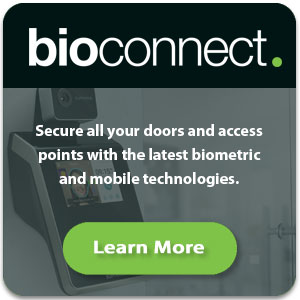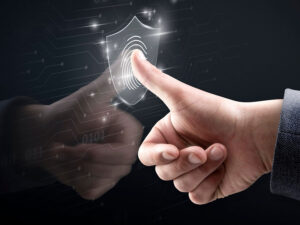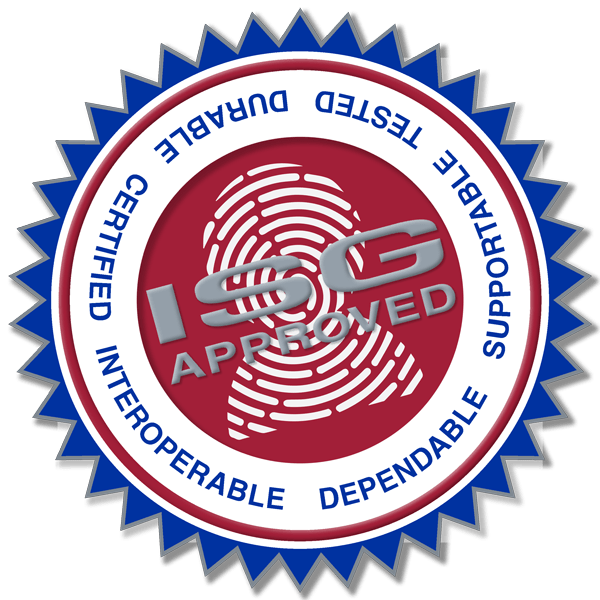Securing Everyday Life
Everyday, people travel to a large variety of places. Whether it’s to work, school, or home, thousands of people could enter a facility on any given day. As a large majority of facilities are open to the general public, between employees, residents and visitors, facility managers may find it significantly challenging to confirm which individuals are authorized to enter a facility. Although many facilities include security cameras, it’s very difficult for facility managers to watch every minute of the video captured and determine who belongs. Without a doubt, as concerns heighten around public safety and security, facilities must implement reliable security systems to confirm a person’s identity.
It is no question that security continues to challenge society, in trying to implement a strong, reliable technologies to block intruders. Due to the continuous cybersecurity threats across the globe, many facilities have turned to biometric security solutions.
An Overview of Biometrics
For several years, biometrics has been utilized as one of the primary sources of ensuring a high-level security system in many facilities. By using biometrics, a system administrator automatically has the power to verify a person’s true identity based on their own unique characteristics such as fingerprints, voice, retinal scan and facial structure. As biological traits are very difficult to replicate, a security system that implements a method called two-factor authentication, for example, using both biometric biological traits and a smart identification card can significantly enhance a facility’s security.
How Biometrics Are Used
Some examples of what biometric security solutions can do today include:
- Authenticate a person’s identity
- Control access to a facility
- Monitor restricted access to specific areas of a facility
- Generate data logs of when an employee clocks in and out
- Verify signatures and biological traits
- Replace traditional access measures such as passwords and key cards
Across several types of fingerprints and environments, the quality of the image captured is critical for assessment. Many facilities utilize a biometric sensor that incorporates a multi-spectral imaging system, as it illuminates the skin at different depths in order to gather accurate information from inside the finger and amplify any available surface fingerprint data.
Such sensors are capable of retrieving information from a finger no matter the level of contact that the skin had with any external environmental factors such as water or oil. Multi-spectral sensors function for the general individual who has normal, wet, dry or damaged fingers, across the widest range of conditions such as lotion use and hand temperature. The sensors are also capable of resisting any damage from cleaning products and contamination from external objects.
True Identity & Liveness Detection
The ability to determine whether or not the information collected is from the correct, living individual is known as true identity and “liveness” detection. Although the technology used to determine true identity and liveness optimizes accuracy, it is very important to ensure that the capture is secure and trusted.
Interoperability testing must be performed by independent third parties, like the National Institute of Standards and Technology (NIST), to ensure that the captured data used is secure and based on the following template-matching modes:
- Template-on-card and card/mobile + finger modes using “1:1” template-matching
- Template-on-device mode for finger-only authentication using “1:N” matching
Privacy Considerations
When correctly used, biometric solutions with true identity and liveness detection can also ensure the protection of individual privacy. For example, if you cannot use a fake finger mimicking a fingerprint, then although you may have obtained someone’s fingerprint data, it remains completely unusable.
Biometric data must be utilized with equal precautions to any sensitive information. Beyond the encryption of the data itself, there are a countless alternatives available for generating highly secure and well-protected systems, using two-factor and multi-modal authentication. These methods are fully capable of maintaining security to the highest level possible, even if some identifying data has been compromised.
Use Cases in Campus Facility Management
Lab facilities and clean rooms at colleges and universities, corporations and government agencies are doing expensive research using materials and equipment that may be highly dangerous if not used appropriately. Therefor, only a limited number of individuals would be qualified to handle these materials and equipment. Biometric security would grant permissions to materials, data and equipment only to those authorized.
Colleges and universities, as well as professional and Olympic sports teams, have high-level athletic facilities in order to train, practice and play games. These facilities are potentially worth millions of dollars and contain valuable equipment. Biometric access would allow these expensive facilities to maintain a high level of security in all areas while still permitting quick, simple, frictionless and beneficial access to members and staff.
School, healthcare, corporate and government campuses across the world offer areas for students, patients, visitors and staff to dine together in common areas. It is crucial to ensure that these areas are fully secured as these locations typically involve large groups of people, which may expose personal belongings that could be compromised. Furthermore, dining halls and cafeterias often incorporate meal cards, for which the authorized individual is required to scan their ID to pay for the meal. As these cards link to their personal accounts, it’s important to ensure that these cards are secured to the fullest capabilities. As it is very difficult to distinguish whether or not an individual is permitted to use another person’s card, campuses must ensure that all security protocols are in place to avoid theft. Biometric point-of-sale solutions offer a simple yet effective way to avoid any intentional or unintentional theft as most biometric authentication methods prove that “you are who you say you are” without the need of a separate card.
Biometric Security Solutions from the ISG
It’s evident that biometrics have begun to play a significant role in providing efficient and effective security systems across the globe. As we look to the future, world-renown scientists and technology industry leaders anticipate that artificial intelligence will pave the way for innovation. The combination of biometrics and AI generates the ability for the resulting hybrid technology to not only identify the user, but also “learn” how the user behaves and functions – how the individual walks, talks, behaves, etc. This type of technology could reduce potential threats to security and allow more people to live in a healthy balance of convenience and security.
The ISG offers trusted biometric solutions from leading partners like BioConnect, for access control, mobile credentials, biometric tracking, integrated campus services and so much more.
Contact us today to talk to your local ISG expert about using biometrics as part of your organization’s complete security solution.
Original article written by Amanda Douglas for BioConnect.


